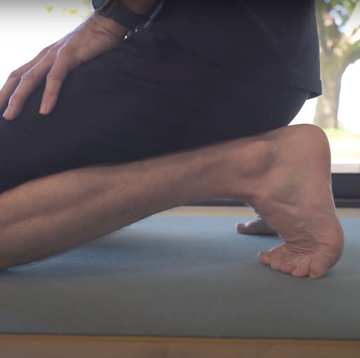If you don’t eat enough to support your training, you’ll trigger an array of health problems including weakened bones, which will in turn make you susceptible to stress fractures.
Everyone knows that—in theory, at least. But it can be difficult to convince motivated runners that there’s a direct cause-and-effect relationship between eating enough and the success of their subsequent training and health. A study Health & Injuries.
The study tracked 323 women athletes at Stanford in 16 different sports, including 47 cross-country runners. Using questionnaires and bone-density scans, the athletes were assessed as low, moderate, or high risk based on the components of the “female athlete triad,” which consists of “low energy availability (EA) with or without disordered eating, menstrual dysfunction, and low bone mineral density.”
Then they checked back to see which athletes developed bone stress injuries, a continuum that ranges from incipient “stress reactions” to stress fractures and—in the worst cases—full fractures.
About half the runners (24 out of 47) were classified as low risk, and three of those athletes went on to develop a bone stress injury—so less than 13 percent.
Sixteen of the runners had moderate risk, and half of them developed bone stress injuries within an average time of a year, meaning: they were about four times more likely to get injured than the low-risk group.
There were just seven high-risk athletes, and five of them developed bone stress injuries, meaning they were almost six times more likely to get injured than the low-risk group.
These are pretty sobering numbers. If you’re a female athlete in the moderate- or high-risk group, your chances of avoiding a season-ending injury are worse than a coin toss. Modifying behavior about eating can be tricky, but perhaps this information can help clarify the stakes for some people.
What are the warning signs of a stress fracture?
Here are six signs (which had to be modified a bit based on the data available) that you may be at risk of developing a stress fracture, as outlined in a consensus statement published in the These key risk factors predict bone injury for females surprisingly well in 2014.
- Low energy availability or loss of body weight, as a result of past or current disordered eating
- Low body mass index (BMI)
- Irregular periods
- Delayed first period (15 years old or older)
- to get more articles like this delivered straight to your inbox
- Previous stress fractures (or stress reactions)
This risk stratification protocol came from a series of conferences in 2012 and 2013, in the hopes of developing some standardised return-to-play guidelines. As Adam Tenforde, M.D., director of running medicine at Harvard University’s Spaulding National Running Center and the study’s lead author, points out, the new results show that the risks calculated with this method are 'not theoretical.'
What does this mean for you?
That’s the trickier part. Just because someone has a higher risk doesn’t necessarily mean she should be stopped from training. It may be, for example, that some of the past risk factors that raise the risk score are already being addressed clinically.
Shin splints how to treat and prevent them:
1. Anyone in the moderate- or high-risk categories needs to be assessed to ensure they’re getting enough calories to support their training, along with calcium and vitamin D.
2. Such athletes need to be monitored on an ongoing basis to ensure these areas—nutrition, menstrual function, and bone health—continue to be addressed.
3. Higher-risk athletes may want to consider altering training by making low-impact cross-training a bigger part of their weekly routine, for example. Good sleep and recovery are also important, Tenforde says.
4. Not all stress fractures are equal. Most of the stress fractures in low-risk athletes were in the foot—a consequence, perhaps, of biomechanics and sport choice (since many of the low-risk athletes were in other sports like basketball, where jumping puts big forces on the foot).
In the higher-risk categories, on the other hand, many of the fractures were in places like the sacrum, pelvis, and femoral neck, where the bones tend to have a different and softer interior structure. These fractures may be less of a direct consequence of biomechanical forces and more the result of weakened bone.
As a result, Tenforde suggests, an injury in one of those places may be a warning sign that the athlete is at higher risk—so that should trigger an evaluation of bone health, including a bone density scan.
These key risk factors predict bone injury for females surprisingly well? Sign up to our newsletter Is ultra-running bad for the heart.













